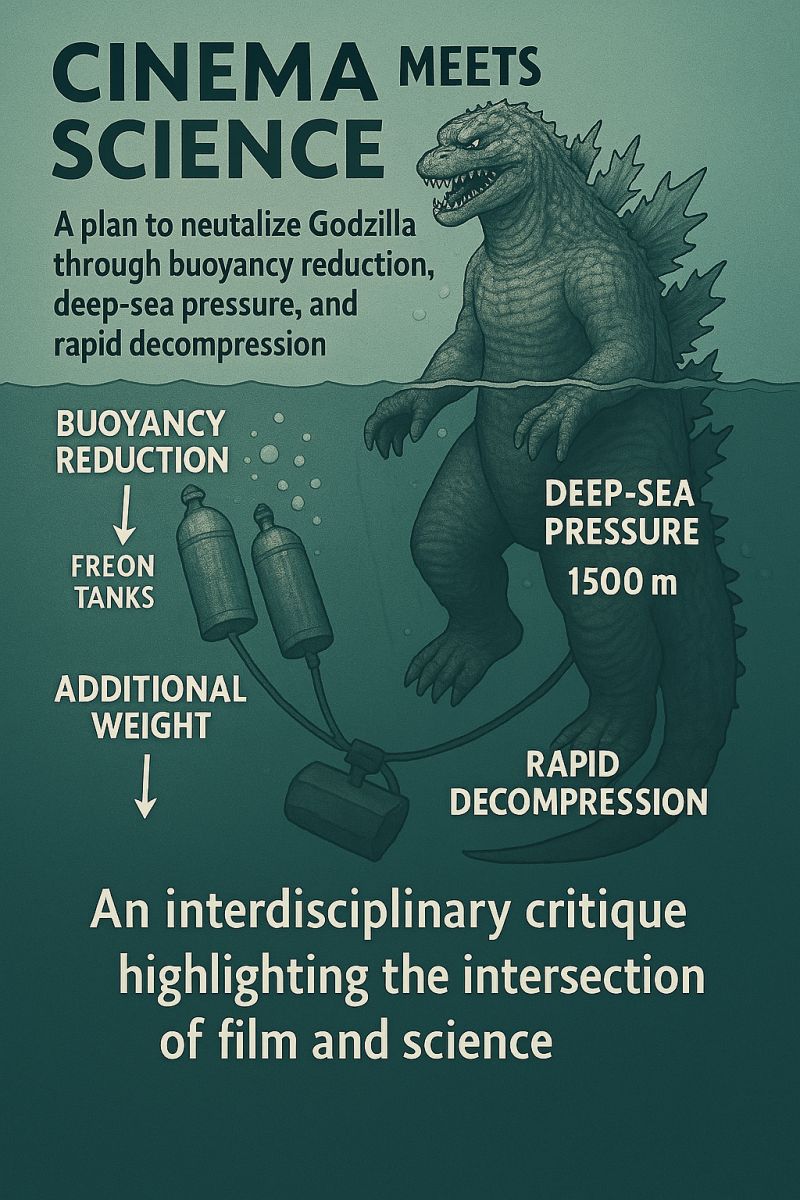Abstract
Cinematic and pop culture narratives offer powerful tools for engaging with science by contextualizing complex principles within familiar, imaginative stories. This paper investigates the scientific feasibility of a plan depicted in Godzilla Minus One to neutralize the iconic kaiju through buoyancy reduction, exposure to deep-sea pressure, and rapid decompression. Employing principles from fluid mechanics, thermodynamics, and biomechanics, the study critically examines the use of freon bubbles and additional weight to counteract buoyant forces, the effects of 1500-m oceanic pressure on Godzilla’s physiology, and the potential for barotrauma during rapid ascent. While theoretically plausible, the proposed strategies face insurmountable challenges, including logistical impracticality and Godzilla’s presumed biological adaptations. This interdisciplinary critique highlights the intersection of film and science, encouraging critical analysis of cinematic representations and fostering a deeper appreciation for the scientific principles they attempt to portray.
